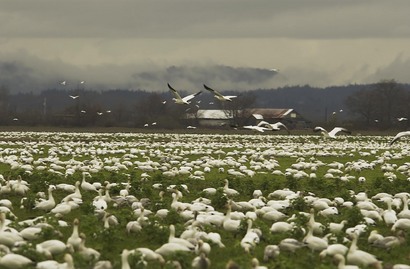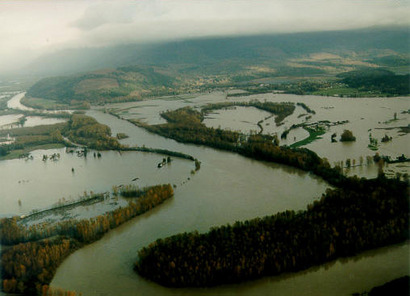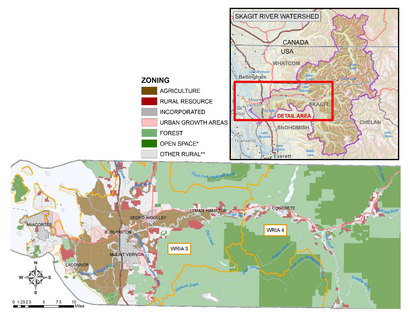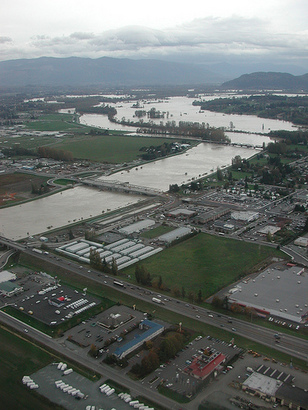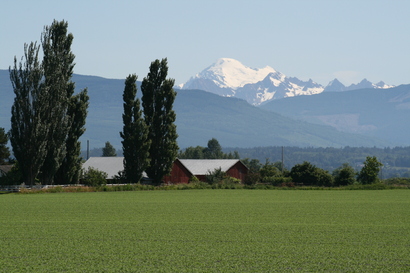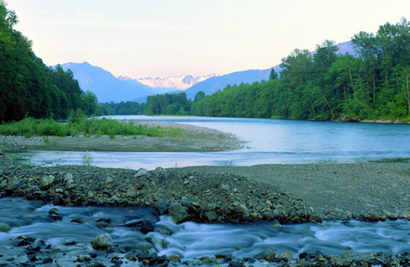Skagit Alternative Futures
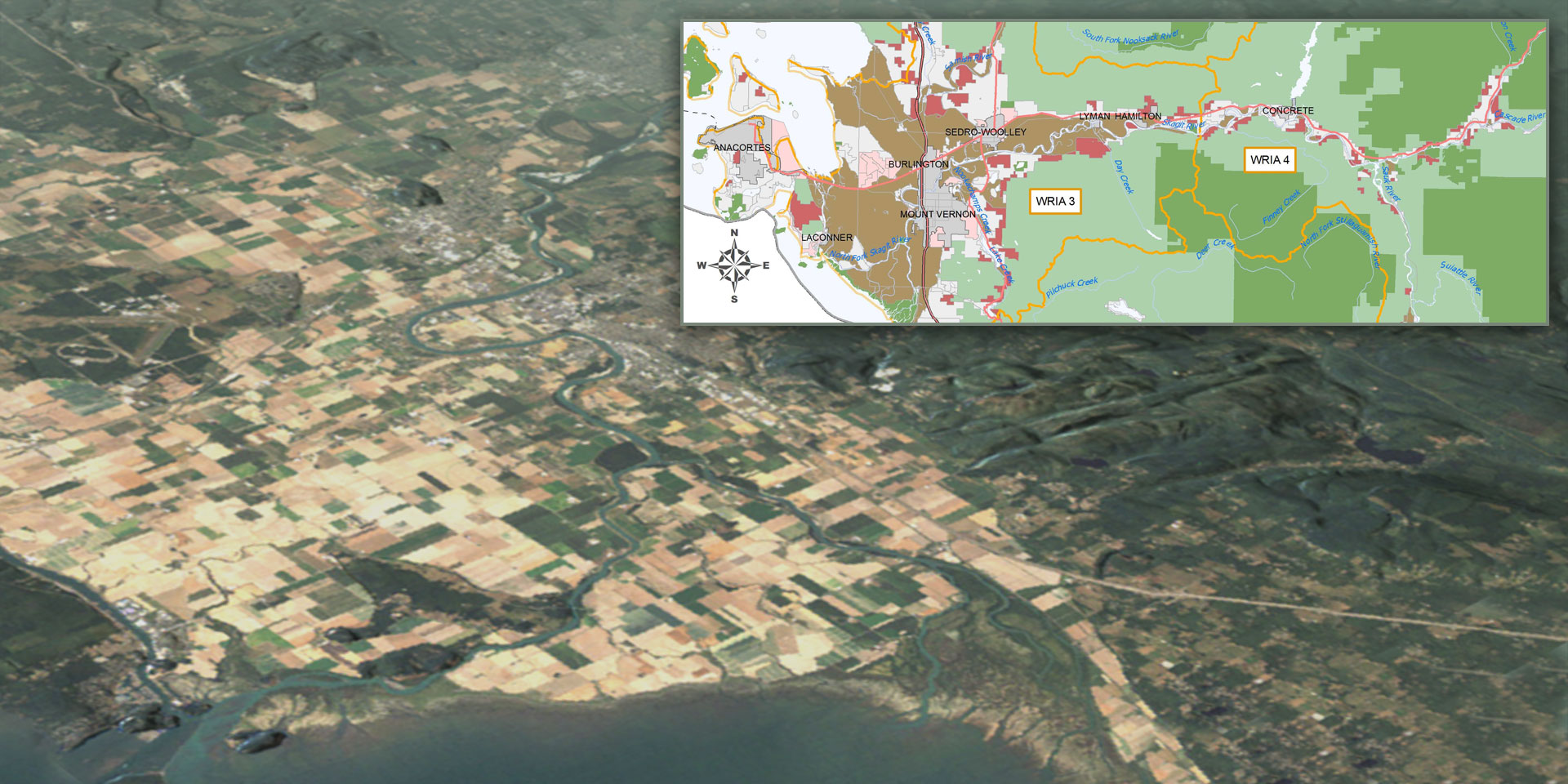
Creating a "Preferred Future" for the Skagit River watershed
PRISM is playing a central role in one of the most exciting and important community-based planning efforts underway in the region, the Skagit Alternative Futures Project. Funded by an EPA grant to Skagit County, the four-year project is working with a technical team (coordinated by John Lombard, Manager of PRISM Applications) and a stakeholder group to develop a broadly supported vision and detailed implementation plan for an "alternative future" for the Skagit River watershed, the largest and most ecologically important river basin in the Puget Sound area. Looking out 50 years, the plan is intended to accommodate inevitable growth and respond to climate change in a way that, to the greatest extent possible, can also improve ecological conditions and preserve the local farm economy.
The project is moving forward in three phases:
- From July 2008 through June 2010, the project is focusing on defining and evaluating four initial alternatives-the Plan Trend, Development, Conservation and Agriculture futures-under different scenarios of population growth (which would apply equally across the different futures).
- Learning from this initial evaluation, starting in mid-2010 a Citizens Committee will be responsible for developing a "Preferred" future, working with technical committees for the ecosystem, growth management, agriculture, and forestry.
- In 2011 and 2012, the County and other implementing bodies will incorporate guidance from this future into comprehensive plan policy and map (zoning) changes, incentive programs, development regulations, a surface water management plan, funding priorities for habitat restoration and farmland preservation, and other policies and programs.
Expected long-term outcomes include improvements in key indicators for water quality, salmon recovery, and ecological health and functioning; satisfaction of criteria for the long-term viability of agriculture; and improved certainty and predictability for development.
The UW's College of Forest Resources is assisting the Skagit Alternative Futures Project by evaluating how changes in land cover would likely affect biodiversity and key wildlife species. The UW's Climate Impacts Group is assisting the project with a summary for policymakers of current climate research in the Skagit watershed. The UW's River History Project is assisting with modeling historic conditions in the Skagit Valley. Other prominent technical partners include NOAA Fisheries, The Nature Conservancy, the Washington Department of Fish and Wildlife, and Skagit County's Planning, Public Works, and Geographic Information Systems departments.

